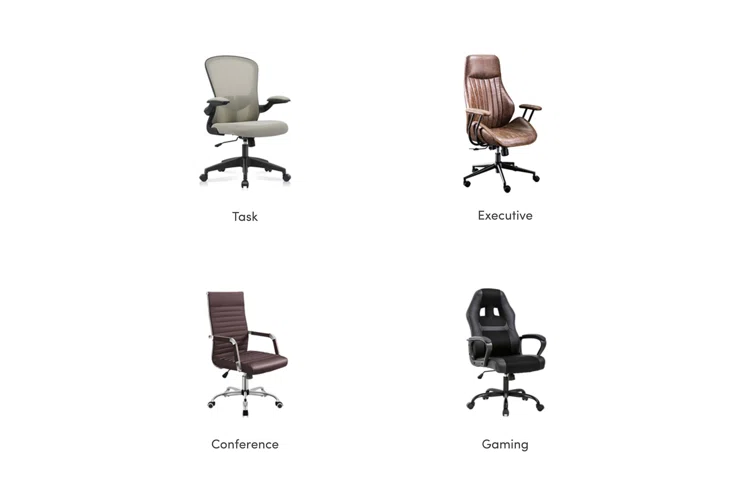Choosing the right chair is essential for comfort, productivity, and a professional workspace. Ergonomic task chairs and executive chairs serve different purposes, catering to specific needs and preferences. While ergonomic seats focus on functionality and support, executive chairs emphasize style and authority. Understanding their differences helps you select the perfect option for your work environment. Let’s dive into what sets them apart and how they can improve your workspace.
What are Ergonomic Chairs?
An ergonomic chair is designed to provide maximum support and comfort for extended periods of sitting. It is tailored to encourage proper posture and minimize strain on the back, neck and shoulders. Adjustable features like lumbar support, seat height, and armrests allow users to customize their seating experience. These chairs are commonly used in offices where individuals spend long hours at desks. Their focus is on promoting health and productivity through thoughtful design.
What Are the Benefits of Ergonomic Task Chairs?
Encourages Proper Posture
They are equipped with features like adjustable lumbar support to maintain spinal alignment. Proper posture minimises strain on the back, shoulders, and neck, reducing the risk of pain and injury. These chairs promote comfort and reduce fatigue by supporting the spine’s natural curve. Adjustable seat height ensures feet are flat on the floor, which improves balance and circulation.
Reduces Physical Discomfort
Ergonomic seating is designed to minimize pressure points and prevent common discomforts associated with long periods of sitting. Padded armrests, adjustable seats, and customizable backrests contribute to a more comfortable experience. These features allow users to find their ideal position, reducing the likelihood of aches and stiffness.
Promotes Healthy Movement
Movement is essential for reducing stiffness and improving circulation during long sitting periods. Ergonomic designs often include reclining functions and swivel bases to encourage dynamic sitting. These elements help prevent the health risks associated with prolonged immobility. Movement-friendly seats also support muscle engagement and flexibility, reducing the likelihood of musculoskeletal problems.
What Is an Executive Chair?
An executive chair is typically associated with luxury, style, and authority in professional settings. They are designed to make a statement while offering comfort and support. They are often larger, featuring high backs, plush padding, and premium materials like leather or fabric. Executive seating prioritizes aesthetics and prestige, making it a popular choice for managers and decision-makers. While comfort is a focus, the design also emphasises a professional appearance.
What Are the Benefits of Executive Chairs?
Aesthetic Appeal
They are designed to elevate the look of a workspace with their sophisticated style. High-quality materials and elegant designs contribute to a professional and polished appearance. Their luxurious look makes them ideal for environments where impressions matter, like boardrooms or high-level offices.
Provides Comfortable Support
While style is a focus, they prioritise comfort, with features like thick padding and high backs. These elements support the neck, shoulders, and lower back during long meetings. The cushioning ensures a comfortable seating experience, even during extended use. They are an excellent choice for those who balance occasional long hours with a need for style.
Creates a Sense of Authority
They are often larger and more imposing, symbolizing status and leadership in the workplace. Their presence in an office or meeting room communicates professionalism and authority. This psychological impact can boost confidence and enhance the user’s workplace presence.
You may also read: Ali Siddiq Net Worth Career And Life
An ergonomic chair focuses on functionality, offering adjustability, posture support, and movement to enhance well-being. Executive chairs, on the other hand, prioritize aesthetics, prestige, and comfort for professional settings. Each type has unique benefits that cater to specific needs, from task-focused work to creating an impressive office environment. Choosing the right option depends on priorities like comfort, appearance, or productivity.

